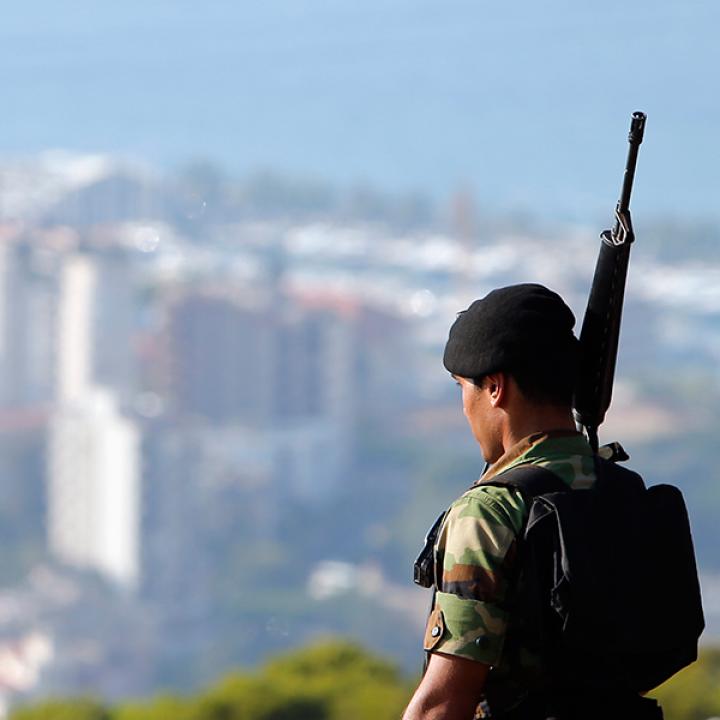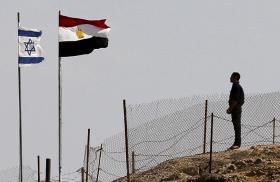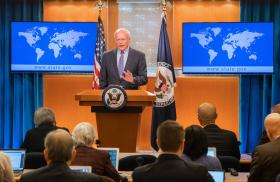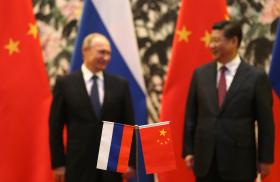
- Policy Analysis
- PolicyWatch 4099
Without a Hezbollah Disarmament Deadline, Lebanon Should Face Repercussions

The government and military’s decision to seize the group’s weapons is unprecedented and welcome—but it won’t mean anything without a clear and viable timeline for implementation, especially as political maneuvering for next year’s election begins.
On September 5, the Lebanese Armed Forces presented the government with a plan for disarming Hezbollah in four phases based on location: (1) south of the Litani River, (2) from the Litani to the Awali River, (3) in Beirut and its suburbs, and (4) in the Beqa Valley region. Although the government welcomed the plan, its details remain confidential, and it is unclear when the LAF is supposed to complete the mission. Given the risks of leaving Hezbollah well-armed and inviting another war with Israel, the United States and its partners should make clear that this vagueness is unacceptable.
Known Details
The plan’s lack of a timeline is particularly problematic. During cabinet sessions on August 5 and 8, the government tasked the LAF with developing a plan to bring all weapons under state control by year’s end. Yet the LAF plan only commits to finalizing disarmament south of the Litani by that date, leaving the rest of the progress open-ended and therefore subject to future political and security dynamics. Rather than setting a clear timeline, the army was asked to submit “monthly reports.”
According to Lebanese government sources, the purpose of this ambiguity was to avoid a clash with Hezbollah and its Shia political partner the Amal Party, represented by Speaker of Parliament Nabih Berri. The refusal to risk confrontation comes despite the group’s weakened military capabilities and infrastructure. Berri also insisted that the government condition the transition from phase 1 to 2 on Israeli concessions. As such, Information Minister Paul Morcos stated last week that any progress beyond phase 1 hinges on Israeli steps; based on previous statements, these presumably include withdrawing from the five points that Israeli forces still occupy on the Lebanese side of the border, ceasing airstrikes, and handing over prisoners.
Morcos also stated that “the LAF will begin implementing the plan according to its capabilities.” In other words, the army can basically decide when and how it will take over a Hezbollah weapons facility depending on the risk of confrontation. The unstated implication is that without outside military assistance, the LAF will not continue on to phases 2-4. The plan also reportedly guarantees that within the first three months, the LAF will cease providing Hezbollah with licenses to move military materiel throughout Lebanon. Yet this restriction will not mean much if the group is permitted to keep said materiel in strongholds north of the Litani, since it has a long track record of covertly moving weapons back to the border and reestablishing its military positions once the pressure eases and the monitors stop monitoring.
Crafting an Appropriate Response
Despite Lebanon’s welcome decision to take action against Hezbollah weapons, its vague timeline, premature conditions on Israel, and other factors are all problematic and could delay the process for years. Accordingly, the United States and its partners should take firm steps to forestall such delays:
Set clear deadlines. Prime Minister Nawaf Salam stated that implementation of the LAF plan should happen within the timeframe decided by the cabinet on August 5—that is, by the end of this year. Yet recent leaks indicate that the LAF is thinking fifteen months, causing much confusion. Washington should therefore push President Joseph Aoun and other officials to state an agreed deadline publicly and clearly. Ideally they will stick to the original target of December 31, but if that proves infeasible, then another acceptable date could work as long as it is clarified publicly, set in stone, and shielded from further political interference.
Condition U.S. assistance. To incentivize clarity on timing, the United States should guarantee that the LAF will receive more assistance once implementation progresses. For example, benchmarks could be established for sending specified assistance if certain sectors are cleared by certain dates—in fact, this may be the only way to motivate the LAF to take the requisite risks of confronting Hezbollah in these sectors. Conversely, if the army does not expand its efforts north of the Litani, it should understand that all U.S. assistance would be jeopardized. And there is no need to wait three months—to confirm the LAF’s seriousness, Washington could use the existing U.S./French-monitored ceasefire mechanism to ask that the LAF take over at least one Hezbollah military facility north of Litani now rather than later.
Support for the government’s institutional reform efforts and postwar reconstruction could likewise be conditioned on disarmament progress. The bottom line should be made clear: the more Lebanon fulfills its plan to seize Hezbollah’s weapons, the more financial, military, and technocratic support it will receive, and the better its chances of attracting crucial foreign investment.
Emphasize LAF precedents. Although the fears that Lebanese officials have expressed regarding conflict with Hezbollah and wider civil war are valid, U.S. officials should remind them that the LAF has a long record of successfully confronting armed groups in the past, including the 2007 battle against Islamist militants in Nahr al-Bared camp; the 2012 clashes in Tripoli sparked by the Syria war; the 2013 clashes against Islamists in Sidon; and the 2017 battle against Islamic State elements in Arsal. Granted, fighting Hezbollah is a more complicated prospect for various social, political, sectarian, and military reasons. Yet the LAF is more capable—and Hezbollah is more militarily degraded and isolated—than ever before, so if confrontation is the only way to ensure disarmament, then the LAF should not shy from it. Treating Sunni and Shia terrorism equally is also imperative given the ongoing rise of sectarian tensions in Lebanon and the wider Middle East.
Leverage sanctions during election season. Additional U.S. sanctions could be a useful pressure tool if targeted and timed appropriately. For example, individuals who are trying to undermine disarmament—such as the five Shia ministers who walked out of the cabinet last Friday to protest the discussion of taking Hezbollah’s weapons, right before the LAF commander walked in to present the plan—should be sanctioned because they have clearly taken sides with the militia against the government. Washington should also consider sanctioning high-ranking Amal figures or even members of Berri’s family for corruption and/or protecting Hezbollah; this measure is already amply justified under the Treasury Department’s Global Magnitsky authority. The speaker has made clear that he will side with Hezbollah on every issue, but he has suffered no international consequences for repeatedly supporting a designated terrorist group.
Pressuring Berri could be especially productive as the May 2026 parliamentary election approaches. He, Amal, and Hezbollah will need each other even more during the campaign season in order to guarantee that they win all twenty-seven Shia seats in the next parliament—a prerequisite for retaining the speaker position, influencing the formation of the next government, shaping future cabinet appointments, and maintaining control over Lebanon’s shadow cash economy. Hezbollah cannot rebuild its military infrastructure without this political and financial infrastructure, so the election is a critical battleground for containing the group. Thus, in addition to sanctioning those who align with Hezbollah, empowering and protecting Shia political alternatives is vital to isolating the party and its weapons from the next government. This could include diplomatically supporting alternative factions and, most important, helping them connect with the non-Hezbollah Shia business community. If Lebanon fails to put forward such alternatives or set a firm, mutually acceptable timeline for all phases of the LAF disarmament effort, the most likely outcome is another war with Israel.
Hanin Ghaddar is the Friedmann Senior Fellow at The Washington Institute and author of Hezbollahland: Mapping Dahiya and Lebanon’s Shia Community.



